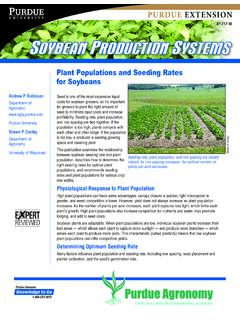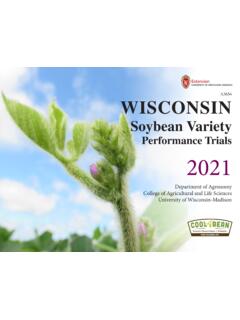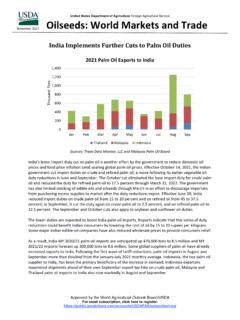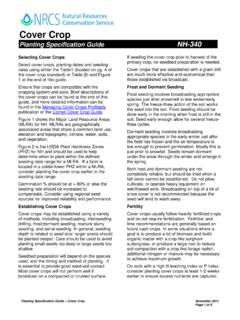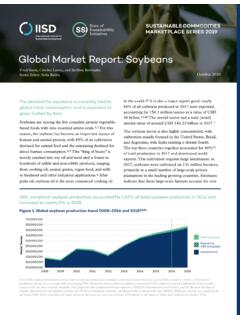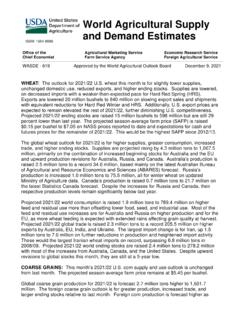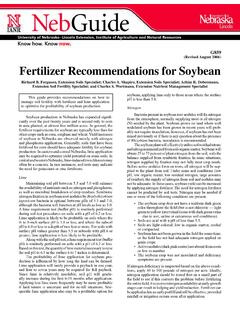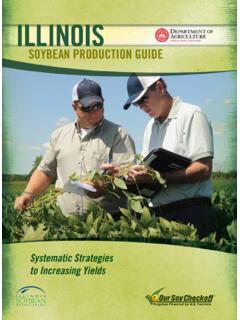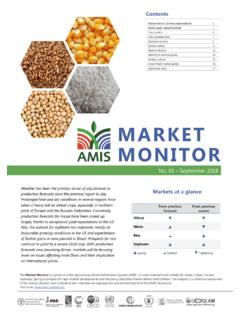Transcription of Guide to Soybean Production in Northern Nigeria
1 Omoigui, Kamara, N. Kamai, Dugje, F. Ekeleme, P. Lava Kumar, T. Ademulegun, R. African AgricultureFEED THE FUTURE Nigeria INTEGRATED AGRICULTURE ACTIVITYG uide to Soybean Production in Northern NigeriaRevised Edition 2020 Omoigui1, Kamara1 N. Kamai1, Dugje2, F. Ekeleme1, P. Lava Kumar1, T. Ademulegun1, and R. Solomon1 Guide to Soybean Production in Northern Nigeria 1. International Institute of Tropical Agriculture, Ibadan, Nigeria2. University of Maiduguri, NigeriaRevised EditionFebruary 2020iiGuide to Soybean Production in Northern NigeriaPublished by the International Institute of Tropical Agriculture (IITA)Ibadan, NigeriaIITA is the lead research partner facilitating agricultural solutions for hunger and poverty in the tropics. It is a member of the CGIAR Consortium, a global research partnership that unites organizations engaged in research for sustainable development for a foodsecure address:IITA, Grosvenor House, 125 High StreetCroydon CR0 9XP, UKHeadquarters:PMB 5320, Oyo RoadIbadan, Oyo StateISBN 978-978-131-367-7 Printed in Nigeria by IITAC itation: Omoigui, Kamara, N.
2 Kamai, Dugje, F. Ekeleme, P. Lava Kumar, T. Ademulegun, and R. Solomon. 2020. Guide to Soybean Production in Northern Nigeria . Revised Edition. International Institute of Tropical Agriculture, Ibadan, Nigeria . 23 : Mention of any proprietary product or commercial applications does not constitute an endorsement or a recommendation for its use by : IITA Research Supervisor in a Soybean field. iiiiiThis handbook is intended to Guide farmers, extension personnel, students of agriculture and researchers in Nigeria to use improved varieties and complementary Production practices to increase productivity. The Guide draws its lessons from the work and experience of IITA and partners in Research for Development on crop-based systems in publication is a Production of the Feed the Future Nigeria Integrated Agriculture Activity implemented in targeted locations of Borno and Adamawa states, Nigeria between 2019 and 2021, and was made possible through financial support from the United States Agency for International Development (USAID).
3 As part of its contribution to the economic recovery process in the North East Part of Nigeria which has been ravaged by the insurgent activities of armed groups, USAID awarded to the International Institute of Tropical Agriculture (IITA) and its Partners (International Crops Research Institute for the Semi-Arid Tropics and Catholic Relief Services) the two-year Feed the Future Nigeria Integrated Agriculture Activity which aims to advance the objectives of inclusive and sustainable agriculture-led economic growth; strengthened resilience among people and systems; and a well-nourished population, especially among women and children in targeted locations of Borno and Adamawa states, Nigeria . The Activity seeks to support vulnerable populations to engage in basic farming activities that will improve food security, increase agricultural incomes and improve resilience among smallholder farmers and their families.
4 It works with a coalition of partners to facilitate improved agro-inputs and extension advisory services to serve vulnerable populations; Forward and AcknowledgementsivGuide to Soybean Production in Northern Nigeriastrengthen the institutions that form the market system and the networks that serve smallholder farmers who have been disenfranchised by conflict; and facilitate the engagement of youth and women in economic and entrepreneurial activities. We acknowledge the many people who have contributed to the development of this handbook other than the listed authors, especially the leadership provided by the Deputy Chief of Party of the Feed the Future (FtF) Nigeria Integrated Agriculture Activity and the component lead Mr. Olukayode Faleti and all the other staff of the Activity for their tireless efforts and immense contribution towards the achievement of the Activity s objectives.
5 The Activity would also like to recognize the support and guidance provided by the Management of IITA led by the Director General, Dr N. Sanginga, Dr Kenton Dashiell, Dr Alfred Dickson, Dr Robert Asiedu, Dr. Gbassey Tarawali and others for their continued support to the Activity. Finally, we thank Dr. Charles C. Iyangbe the Activity s AOR and his other colleagues at USAID who have provided their active support in terms of providing technical guidance in making sure we follow USAID rules and regulations and the documents are of quality. Prakash Kant Silwal, Chief of Party, USAID Feed the Future Nigeria Integrated Agriculture Activity, International Institute of Tropical Agriculture, IITA Abuja Station, Kubwa, Abuja FCT, views expressed in this publication are those of the authors and do not necessarily reflect the views or policies of the United States Agency for International Development (USAID) or the United States of Soybean in the global economy.
6 1 Why grow Soybean ? ..2 Conditions necessary for Soybean Production ..2 Preparing to plant ..32. planting ..7 Date of planting ..7 Seed rate ..7 Seed dressing ..7 Plant spacing and 83. Fertilizer ..9 Soil fertility enhancement ..9 Soybean Inoculation using NoduMax for higher yield ..10 How to inoculate Soybean with NoduMax ..104. Pests and 12 Weeds and their control ..12 Manual weed control ..12 Chemical weed control ..12 Insect pests and their control ..12 Diseases and their control ..14 Fungal and bacterial 14 Virus diseases ..16To Control Viral Harvesting Soybean ..206. Postharvest operations ..21 Threshing Soybean ..21 Storage ..227. Reference ..23 ContentsviGuide to Soybean Production in Northern NigeriaList of FiguresFigure 1 Preparing land for Soybean Production using a Figure 2 Use quality seeds (obtained from a seed company or Research Institute) for 5 Figure 3 Poor quality seeds.
7 Not good for planting ..5 Figure 4 Soybean in rotation with maize..8 Figure 5 Soybean Inoculation with NoduMax (a) Dissolve sticker in warm water. (b) Mix sticker with Soybean . (c) Mix inoculant with Soybean . (d) Inoculated Soybean ready for planting ..11 Figure 6 Rust-infected Soybean leaves with large number of small tan lesions ..14 Figure 7 Large number of spores on the lower surface of tan lesions of Soybean rust..14 Figure 8 Small spots and coalescing lesions of bacterial pustule disease ..15 Figure 9 Phytophthora seedling blight causing wilting of older seedlings..15 Figure 10 Initial symptoms of frogeye leaf spot ..16 Figure 11 Soybean plants affected by the Mosaic disease ..17 Figure 12 Bright yellow mosaic symptoms caused by begomo virus infection in Soybean 18 Figure 13 Dwarf disease-affected Soybean .
8 18 Figure 14 Manual threshing of Soybean ..21 Figure 15 A multipurpose Soybean threshing machine..22 List of TablesTable 1 Recommended Soybean varieties for Guinea savanna ecological zones in Nigeria ..4 Table 2 Recommended dates for planting Soybean in Nigeria ..7 Table 3 Recommended fertilizer rates for Soybean Production in Nigeria ..9 Table 4 Recommended herbicide rates for weed control in Soybean ..13iv1 Importance of Soybean in the global economySoybean is among the major industrial and food crops grown in every continent. The crop can be successfully grown in many States in Nigeria using low agricultural input and cultivation has expanded as a result of its nutritive and economic importance and diverse domestic uses. It is also a prime source of vegetable oil in the international market. The seeds contain about 20% oil on a dry matter basis and this is 85% unsaturated and also has an average protein content of 40% and is more protein-rich than any of the common vegetable or animal food sources found in Nigeria .
9 The rapid growth of both the poultry and food processing industries in the past decade has also increased demand for Soybean in Nigeria . It is believed that cultivation and Production will increase as more farmers become aware of the potential of the crop, not only for cash/food but also for soil fertility improvement and Striga control. The market for Soybean in Nigeria is growing very fast with opportunities for improving the income of farmers. Currently, SALMA Oil Mills in Kano, Grand Cereals in Jos, ECWA Feeds in Jos, KARMA FOOD Ltd in Gwagwalada, AFCOT Oil Seed Processors, Ngurore, Adamawa State, and Mandrides in Kano, all process , along with partners, has developed improved technologies for Soybean Production . This handbook outlines crop Production practices that farmers may use to grow it profitably in to Soybean Production in Northern NigeriaWhy grow Soybean ? It is good for food soy-milk, soy flour, soy-cheese, dadawa, Tom Brown (infant weaning food).
10 It is the source of an excellent (cholesterol-free) vegetable oil. It is used in industries for paper coatings, wood veneer, adhesive and alkyd resins, printing ink, etc. It improves soil fertility and controls the parasitic weed, Striga hermonthica. Soybean cake is an excellent livestock feed, especially for poultry. The haulms provide good feed for sheep and 1. Preparing land for Soybean Production using a necessary for Soybean productionGrowth is influenced by climate and soil characteristics. The crop performs well in the southern and Northern Guinea savannas of Nigeria , where rainfall is more than 700 mm. However, short-duration varieties can thrive in the much drier Sudan savanna when sown early and with an even distribution of rainfall throughout the growing period. The time for planting depends upon temperature and day-length. Soybean is a short-day plant and produces flowers in response to days becoming shorter.



